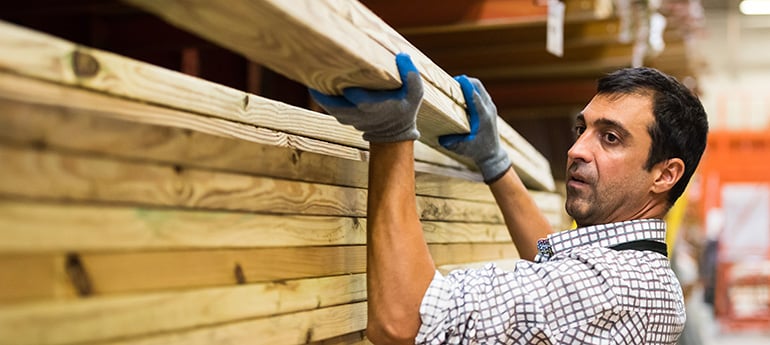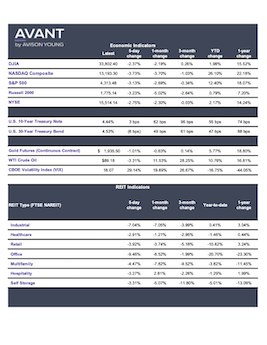Are higher industrial construction costs here to stay?

What do industrial developers think about construction costs?
While industrial construction costs have stabilized since the height of the pandemic, many material costs remain elevated and are likely to remain so for the near future. These higher costs, along with the impact of labor shortages and overall economic conditions, continue to create challenges for developers. Here’s what industrial developers are saying and how the industry is navigating these higher costs while still moving development forward.
Principal
Head of Industrial Capital Markets
[email protected]
+1 312.273.9486
Construction pricing continue to plague the development sector, despite a cool down in inflation and a supply chain that is moderating from widespread disruption during the pandemic. According to government data released in early September and an analysis by the Associated Builders and Contractors (ABC), an increase in diesel fuel costs pushed up monthly construction input prices 1.5% in August, the first increase in six months. Crude petroleum prices have increased by 8.9% and unprocessed energy material prices have increased by 5.4%.
When viewed on an annual basis, some inputs and commodities declined from the peaks seen during the pandemic. However, the increases from February of 2020 to August 2023 were significant -- ranging from 18.2% for plumbing fixtures to 32.2% for concrete products and 75% for steel mill products. A more focused look at inputs used in industrial construction shows an increase of 1.4% from July to August of 2023 -- and a 41.7% increase since February of 2020.
These higher material costs are sometimes compounded by other factors, such as worker shortages, that influence the development cycle and overall costs. These issues are impacting the flow of construction with a few of the massive development projects spurred by the $52.7 billion federal government CHIPS Act, for example. According to Construction Dive, TSMC, a Taiwan-based semiconductor company, moved back the opening of its Phoenix, AZ chip factory until 2025 because of labor issues, surges in COVID-19 infections and licensing issues. The $40 billion project is part of the U.S. government’s efforts to increase computer chip production in the U.S.
What’s ahead for material costs?
Developers operating in markets across the U.S. are observing several trends related to material costs. “We’re seeing construction costs come down from their peak during the pandemic, but there are still some problems with availability of materials, such as electrical switch gear and transformers,” said Don Schoenheider, Executive Vice President, Market Leader overseeing Midwest markets for Hillwood Investment Properties.
Michael Murphy, Chief Development Officer with CenterPoint Properties, said that construction inflation pricing has leveled off, but is not expected to return to pre-pandemic levels. “Nationally, there is a lot of construction activity with large battery, automotive manufacturing, and infrastructure projects going forward,” he said. “However, we don’t expect construction costs to recede.”
Are land prices too high?
Developers are also watching land costs closely as they plan future projects. Murphy noted that the company is seeing fewer land buyers, while land carrying costs have increased. Also, the bid-ask spread has widened due to land sellers trying to hold onto unrealistic expectations for valuations.
In this current economic climate, transaction flow for land has slowed. “Land deals are slow to materialize right now,” said Jeff Dillon, Chief Operating Officer for VanTrust Real Estate. “Some sellers are extending options at little to no cost in hopes of maintaining their original price.”
Land values in the Midwest and Southeast are generally holding steady, while Dallas-Fort Worth and Phoenix are experiencing some decline in value, said Dillon.

Development growth across key markets
An Avison Young review of industrial development activity since 2019 shows significant expansion in Dallas-Fort Worth, which ranked first in development volume. The market added 153.3 msf of space (a 24.3% growth in total inventory) and currently has 65.4 msf under construction. Vacancy increased in that market to 8.1% in Q2 2023, approaching its long-term average of 8.4%. This increase is due to the lag in lease-up of the newest deliveries and not a lack of demand, the research noted.
A detailed look at vacancy rates by development cycle shows that older buildings are faring better than newer ones in the Dallas-Fort Worth market. Properties delivered this year have a 70% vacancy rate, compared to those delivered in 2022 (25%). Properties delivered from 1970 to 2010 are operating at less than 5% vacancy. Those delivered from 2020 to 2021 are full stabilized, with vacancy levels from 3.3% to 5.8%.
Other markets that ranked in the top five for deliveries since 2019 include: Philadelphia, with 143 msf (a 17.8% inventory growth) and a current pipeline of 38.1 msf; Chicago, with 98.7 msf (a 9.1% inventory growth) and 29.5 msf under construction; Atlanta, with 96.3 msf (a 15.5% inventory growth) and 35.5 msf under construction and the Inland Empire, with 83.5 msf (a 17.2% inventory growth) and 31.2 msf under construction.
Where are costs headed?
A report from Oxford Economics notes that key input commodities should continue to fall through 2024, but may remain greatly elevated when compared to the pre-pandemic period. Approximately 80% of construction materials have recorded significant cost increases since 2020. And, strong demand for construction will likely keep material pricing, as well as labor costs, at an elevated range for the next few years. Costs are expected to remain elevated long-term due to energy cost and the ongoing scarcity of construction labor.
Download Economic and REIT Indicators
Source: AVANT by Avison Young research

